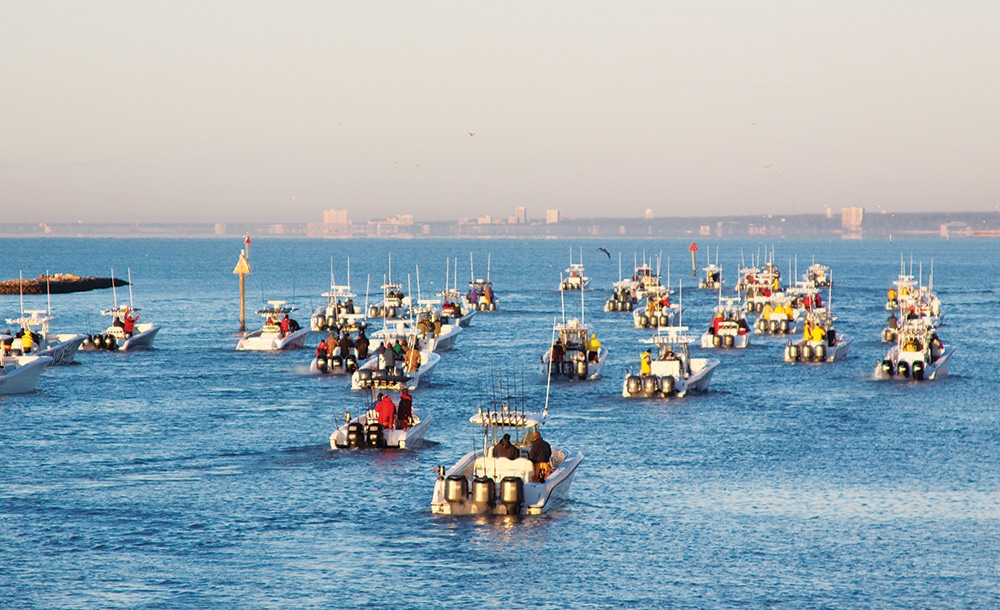
Want to skipper your way to more and bigger king mackerel? Success starts with choosing the right boat and arming it to the teeth, according to top competitors on the kingfish-tournament circuit, anglers who consistently catch “smokers” — kings in the 50-, 60- and even 70-pound range. I picked the brains of winning captains and saltwater-fishing boatbuilders to distill these 10 steps for putting together the ultimate king-mackerel machine.
Stay Centered
Kingfish pros choose center-consoles because the wide-open layout allows for fishing from virtually any point along the rail. In addition, 23- to 45-foot deep-V center-console hulls trump all others for their ability to knife as smoothly as possible through rough seas, since you never know what weather to expect on tournament day. Hardtops and T-tops are virtually required, allowing you to add an enclosure for protection against wind and spray, as well as antennas, radar and rod holders.
Make it Speedy
Speed reigns supreme for tournament anglers, allowing them to run a minimum of 60 mph and sometimes exceeding 70 mph to reach the fish swiftly and to stay out as long as possible before racing home to make the weigh-in deadline. That’s why you often see two, but also three or even four big outboards on kingfish boats. “Speed is key when it comes to kingfishing,” says Scott Smith, captain of Team Instigator, which now fishes a Yellowfin 32 with twin Mercury Verado 300 outboards. Neal Foster, captain of Team Intense, the Southern Kingfish Association 2012 Team of the Year, runs a Contender 35ST with three Yamaha F300 outboards.
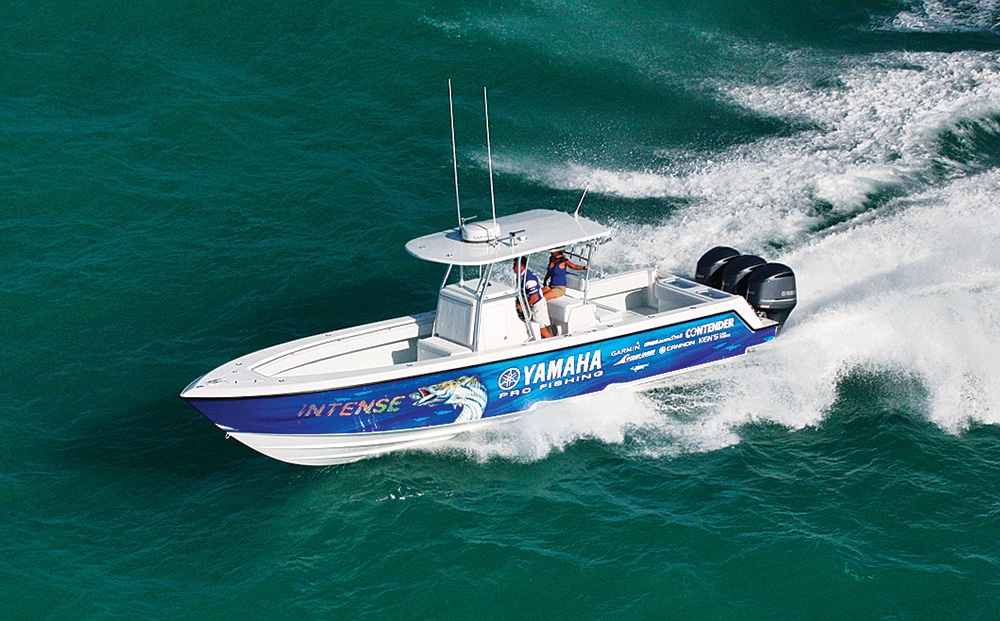
Carry Ample Fuel
Kingfish might be feeding as far as 100 miles offshore, and powerful outboards burn copious fuel at the speeds where pros like to run. So if you want to confidently chase big kings — and do it fast — you’ll need abundant gas. Just one Yamaha F250 V-6, for example, burns about 24 gallons per hour at wide-open throttle (WOT); a single F350 V-8 burns around 34 gph at WOT. So make sure your boat has big gas tanks. A serious kingfish boat should carry at least 150 gallons of gas per engine, and some carry as much as 190 gallons per engine.
Eliminate Snag Points
Allow nothing along the rail that can snag lines or cast nets. This means equipping the boat with retractable cleats and recessed bow rails, if any. Most kingfish captains eschew anchor rollers, as these too easily can foul and tear cast nets, and create issues when fighting a hot kingfish around the bow.
Plan for Plenty of Live Bait
Live bait and lots of it is often the key to success on the kingfish-tournament circuit. Many pros go to battle with two or three large bait tanks, enabling them to carry gobs of live bait, but also to separate bait types (e.g., goggle-eyes from pilchards). Foster’s boat has twin transom livewells of 40 gallons each, plus a 60-gallon in-deck tank. Smith’s Yellowfin has a 50-gallon tank integrated into the leaning post and an 85-gallon in-deck tank.
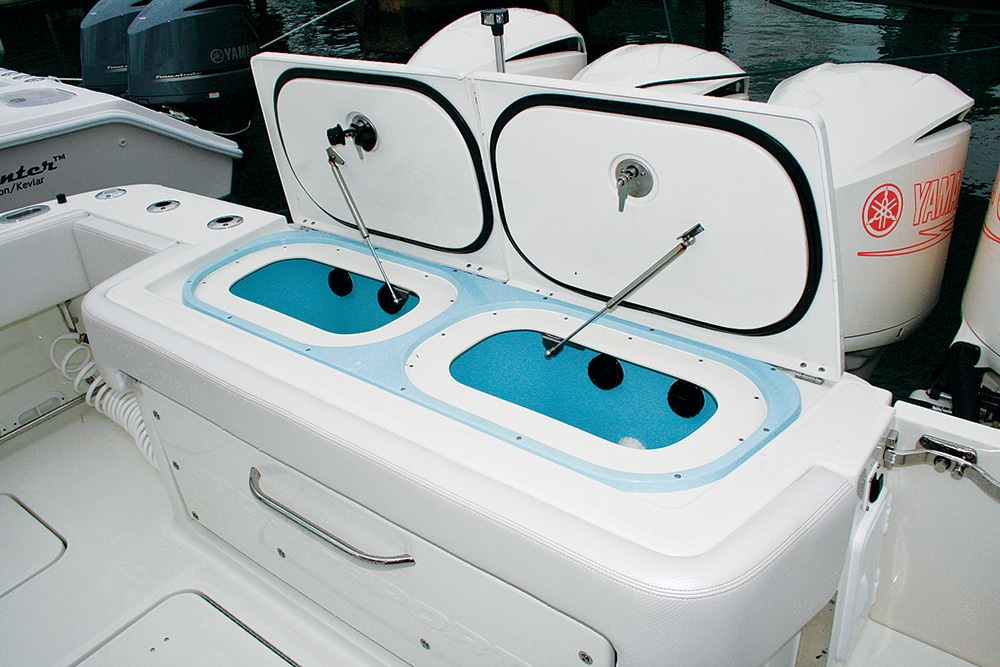
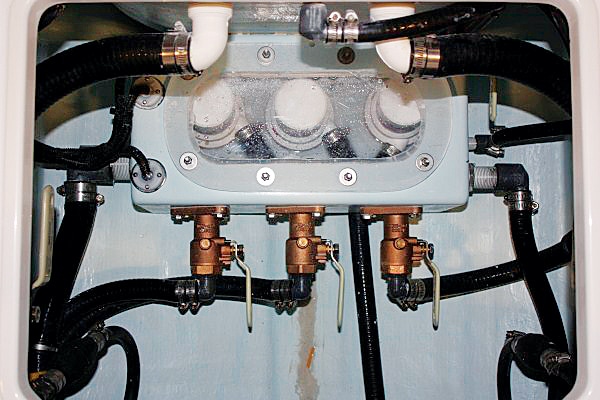
Go for Side-Access Consoles
It seems counterintuitive, but more kingfish pros are opting for side-access consoles, according to Les Stewart Jr., marketing director for Contender Boats. While front opening consoles allow easier access for items such as helium tanks, big balloons and assembled kites, the front-hatch system also eliminates the cooler on the front of the console, which many teams find essential for food and drinks to keep the crew fed, hydrated, and happy during a long day of fishing.
Don’t Skimp on Rod Holders
Kingfish boats sport numerous gunwale rod holders, and the reason is simple: “Our boat has rod holders all the way around the boat, from stern to bow,” Smith explains. “This way we can choose where we want to place our rods depending on how we are targeting kings, be it slow-trolling, kite-fishing or drifting.” Also standard on kingfish boats are rod holders angled at 45 degrees on each side of the T-top or hardtop frame for slow-trolling an elevated line farther aft than the others. Team Intense‘s new Contender also has a vertical three-tier rod rack integrated into the hardtop frame aft of the helm seat, which stows 15 sticks.
Add Quality Electronics
Kingfish pros often run a pair of big multifunction displays from marine-electronics brands such as Furuno, Garmin, Raymarine or Simrad to constantly monitor the fish finders for schools of bait, sea-surface temperature for temperature breaks, a chart plotter to help establish patterns, and powerful open-array radar for spotting flocks of birds over bait schools.
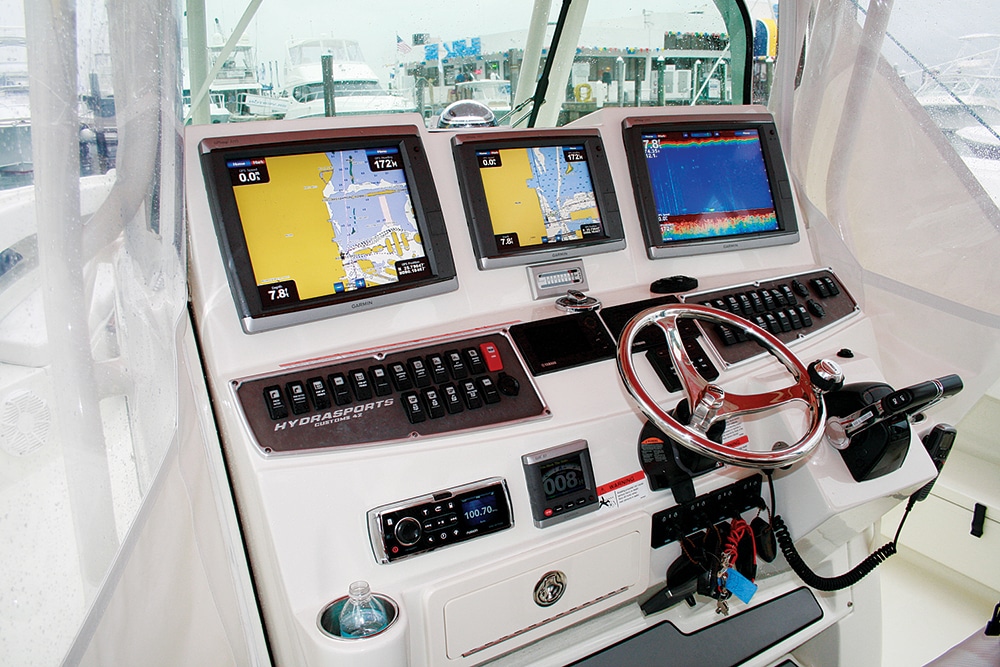
Be Downrigger Ready
King mackerel sometimes feed far below the surface, and having downriggers allows you to reach them better than any other deep-trolling method. If you are not fishing with the downriggers, however, dismount and stow them so they don’t create snag points. In rigging the downriggers, many pros replace the wire cable with 200-pound-test monofilament line, as they believe the “hum” of the wire while deep-trolling spooks kingfish. Mono trolls silently.
Ice, Ice Baby
Having plenty of insulated ice capacity proves critical for three reasons. One is to keep frozen bait, an important backup in case you cannot catch or obtain live bait. Second, you need to keep your chum iced down so it too remains frozen until it’s time to lay down a chum line. Finally, once you land a big king, you want to get it buried in ice as soon as possible to stay fresh and retain its original weight, particularly if you’re competing in a tournament. “Once we land a big girl, it goes straight into the ice,” says Foster, whose boat has two 85-gallon insulated fish lockers in the stern deck, and two insulated lockers in the foredeck that hold 115 and 208 gallons. “Every ounce counts,” he adds.
Foster should know. Team Intense is one of the most successful teams on the kingfish tournament circuit, and its boat is a perfect example of the ultimate king-mackerel machine.








